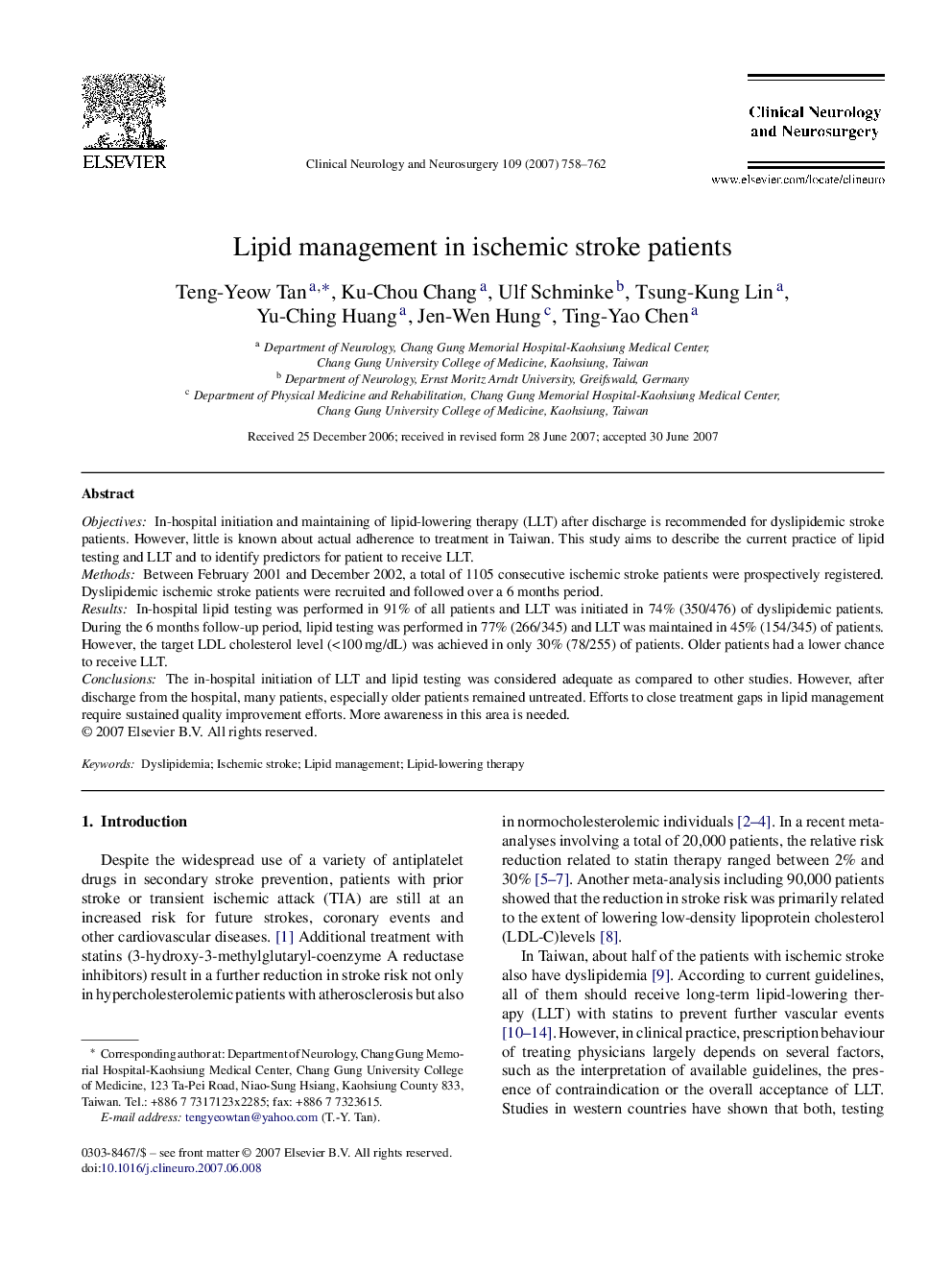| Article ID | Journal | Published Year | Pages | File Type |
|---|---|---|---|---|
| 3042110 | Clinical Neurology and Neurosurgery | 2007 | 5 Pages |
ObjectivesIn-hospital initiation and maintaining of lipid-lowering therapy (LLT) after discharge is recommended for dyslipidemic stroke patients. However, little is known about actual adherence to treatment in Taiwan. This study aims to describe the current practice of lipid testing and LLT and to identify predictors for patient to receive LLT.MethodsBetween February 2001 and December 2002, a total of 1105 consecutive ischemic stroke patients were prospectively registered. Dyslipidemic ischemic stroke patients were recruited and followed over a 6 months period.ResultsIn-hospital lipid testing was performed in 91% of all patients and LLT was initiated in 74% (350/476) of dyslipidemic patients. During the 6 months follow-up period, lipid testing was performed in 77% (266/345) and LLT was maintained in 45% (154/345) of patients. However, the target LDL cholesterol level (<100 mg/dL) was achieved in only 30% (78/255) of patients. Older patients had a lower chance to receive LLT.ConclusionsThe in-hospital initiation of LLT and lipid testing was considered adequate as compared to other studies. However, after discharge from the hospital, many patients, especially older patients remained untreated. Efforts to close treatment gaps in lipid management require sustained quality improvement efforts. More awareness in this area is needed.
